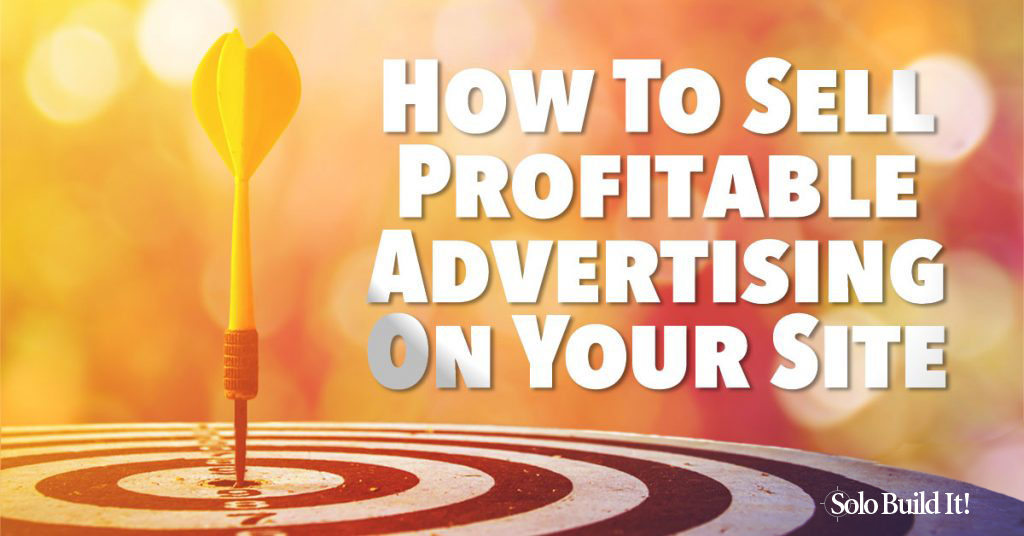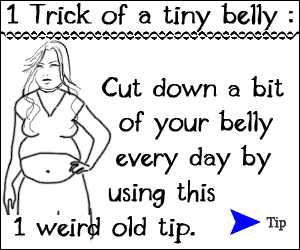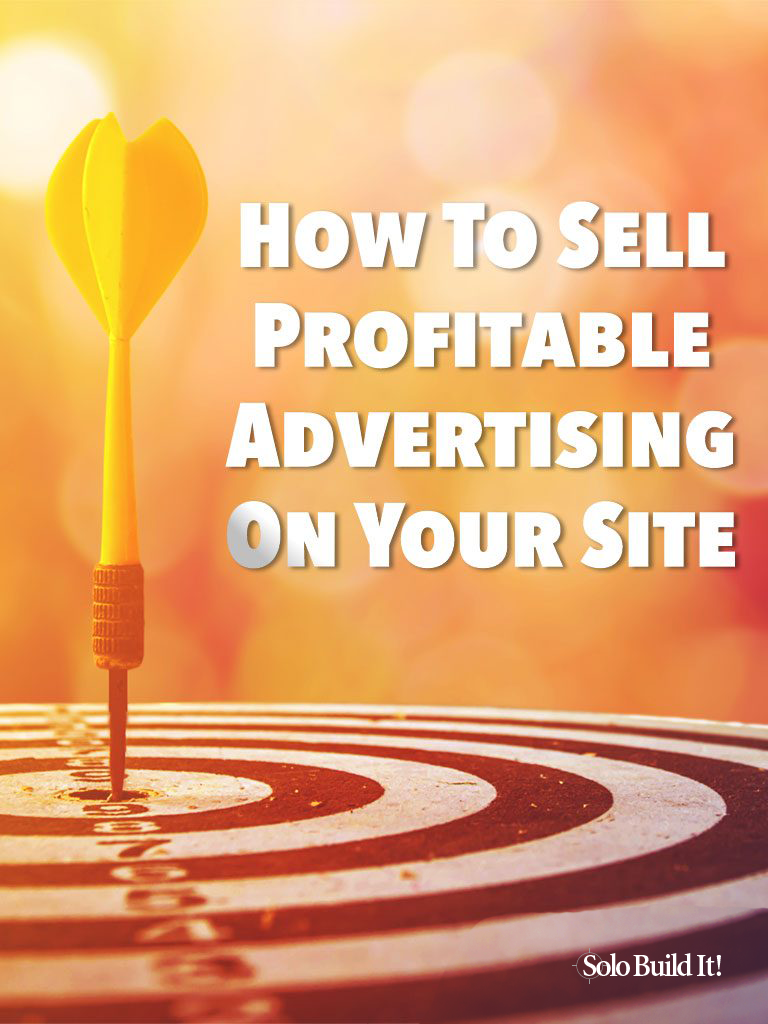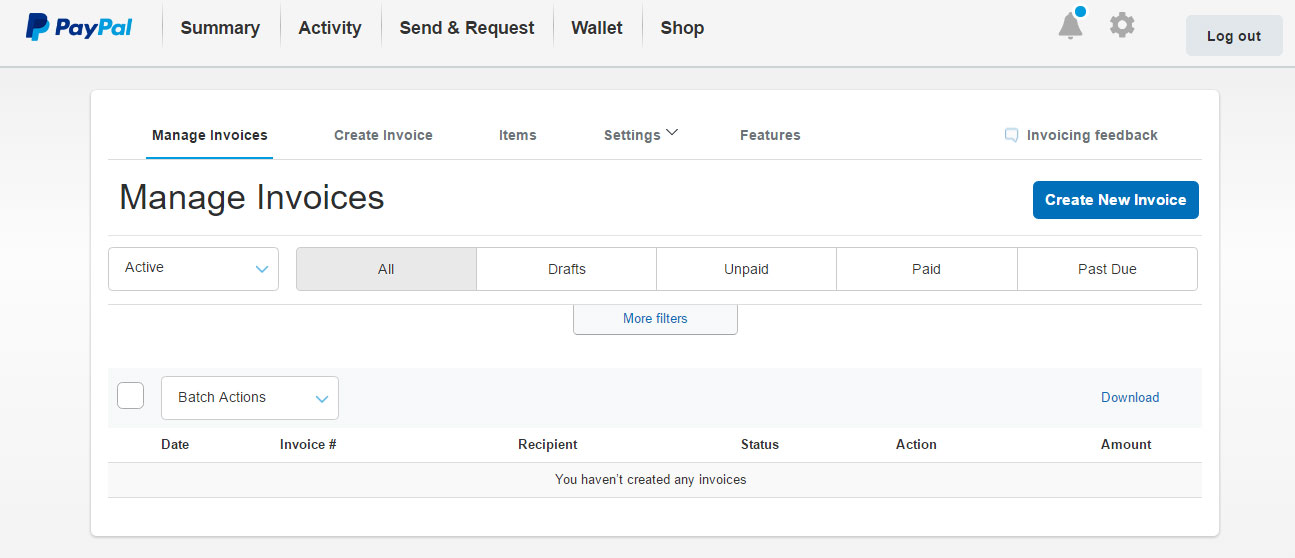
Online advertising is not the highest ROI form of marketing, but it’s certainly the most ubiquitous. Google AdSense is almost a default option for solopreneurs, especially those with lower amounts of traffic. However, it’s possible to secure your own, higher-paying/higher-ROI WIN-WIN deals. This article covers how.
Successful bloggers and site owners are frequently approached by companies and other solopreneurs inquiring about placing ads on their sites. It’s gratifying to receive offers, but if you’re new to this method of monetizing, no doubt you have some questions before you venture into it…
- What kind of ad space should I offer?
- How do I set my rates?
- What fees should I charge?
- How do I keep track of views (impressions) and clicks?
- What about invoicing and collecting payment?
- Should I vet the ads to ensure they’re relevant for my audience?
Before any of those questions get answered, let’s tackle this big one, which is especially important to sites with mid-range traffic that won’t attract unsolicited inquiries…
How the heck can I attract advertisers to my site?
Get Ready to Sell Advertising
A clean, user friendly layout, quality content, and a high-volume of targeted traffic create a natural magnet for advertisers.
The most important advice, which few act on, and yet which is so obvious…
Promote the fact you’re open for business! Create a dedicated landing page that outlines the opportunity. Link to it from every other page of your site (can be a short “Advertise With Us” link).
A solid landing page should, like any other landing page that’s meant to sell a product (which is what your advertising is), give potential advertisers all the information they need to make an informed decision leading to your most wanted response… “space rented.” Why is that?
- Your content establishes you (in the eyes of advertising prospects) as a professional, thorough resource with credibility in the field.
- The landing page highlights the benefits of advertising on your site and all of the different advertising options you offer.
- It takes advertisers through to the next step… the inquiry, or the order!
This is a simple way to leverage your existing traffic. Visitors are not all consumers of “information for information’s sake.” If your traffic is at least mid-range, solopreneurs who sell relevant products will have visited your site. Most don’t think of advertising with you. Even if they do, they don’t bother using your “Contact Us” form because cold calls have a low rate of success.
A landing page makes all the difference.
IMPORTANT: Make it clear that all links are “nofollow” links. It eliminates inquiries that just want to buy “follow” links. Offering “follow” links is the surest route to Google perdition.
Ad Formats
A list of ad types will allow advertisers to assess whether you have a package that will suit their needs and budget. If you’re flexible about ad placement and appearance, mention that on your advertising page.
Your format options may include…
- Text links (priced according to keyword values).
- Banners and buttons of different sizes. The most common sizes are…
- Full Banner 468×60
- Skyscraper Banner 120×600 or 160×600
- Button 120×120
- Image and text link with write-up (this works well for both brick-and-mortar businesses and websites).
- Advertisement in monthly newsletter (a healthy subscriber list will increase the value of a link from your newsletter).
- Search-optimized page, with inbound links from a number of different pages on the site.
- Video ads (a powerful medium to grab customers’ attention and spark interest — when done well).
- A package containing some combination of the above that suits your advertiser.
Offer a variety of creative options. It shows advertisers that you have a firm understanding of their needs and may boost their confidence in your ability to deliver results.
Ad Rates
Advertising rates vary widely among niches. A site about finance or investing might demand a higher ad fee than a site about novelty gifts, for example.
If there’s no “set standard,” how do you calculate the value of an ad on your site? Below are some suggestions.
1) Over and above your niche consideration, take into account factors such as:
- Your site’s SimlarWeb traffic rank (http://www.similarweb.com).
- Traffic numbers for the page where the ad will be located.
- Keyword value (both the keywords the advertiser wants to use in the ad and the keyword value of the page where the ad will be located). [see below for instructions on how to find]
- Age of your site (a well established site vs. a new and less socially connected site).
2) Use the Google Adwords Keyword Planner to find out what advertisers are paying for each of your important keywords (keyword value). (You’ll have to be logged into Google AdWords to use the tool, but don’t worry, you can create an account for free if you don’t already have one.)
Enter your keywords into the text field of the Word and phrase option.
3) Do a search for advertising rate sheets available from other sites. You’ll get a good idea of what your competition is charging for ads.
For example, let’s say that your niche is related to finance. Simply enter these exact words into Google (or any search engine) without any quotes…
“advertising rate sheets +finance” but remove the quotes (though you could include quotes around “advertising rate sheets” if you wanted exact matches).
Once you have established a fair ballpark, you can adjust that price for customized deals that should yield higher than standard ROIs. And remember, there’s no 32% cut to Google. “Direct deals” earn you more.
Fee Framework
Pay-Per-Click — Advertisers pay a set fee (e.g., 30 cents) per click through from your site. Or, you could set a price for a specific number of clicks (i.e., $500 per 1000 clicks). PPC advertising is simple to implement:
- Set up a Tracking Link in Google Analytics so that you can track all clicks through to the advertiser.
- Invoice monthly, based on the number of clicks reported in your stats (more on invoicing below).
Advertisers can double-check the accuracy of your click stats in their log files by watching the referrer field. Click fraud is unlikely, since you’re not Google. But it’s possible. Include a clause in your agreement stating that you will refund documented fraudulent clicks.
Pay-Per-Lead — Using forms results in leads. Leads are easily tracked by setting up the form to send a notification email message to you when someone fills it out.
Monthly or Yearly Fees — You bill advertisers once per month or once per year. Offer yearly fees only or monthly fees with an “incentive” to sign up for a year (i.e., $10/month or $100/year).
The appeal of this setup is that yearly fees are less work for both you and the advertiser, but, keep in mind that one year is a long time to lock in especially since your traffic is likely to continue to grow.
Communicate With Potential Advertisers
So far, you have built an advertising page, then wait for advertisers to come to you. You can be more proactive about selling your ad space.
Provide the Details
Your page should clearly spell out these particulars:
- Details of each setup option you offer and your rates (if you wish) — you can either display your rates on the page, or have potential advertisers contact you to inquire about prices.
- Any restrictions on ad type/placement (e.g., maybe you’d prefer not to link out from your home page, or provide a site-wide link to an advertiser).
- Payment expectations (when/how).
Other Terms
You may wish to include some of the following on your advertising page:
- Reserve the right to decline any advertising inquiry you don’t feel would fit your site.
- Assure potential advertisers that if, at any time, they’re not satisfied, you’ll refund the balance of their payment and remove their ad.
- Mention that prices are subject to change upon renewal.
You now have a preselling tool to monetize the traffic you’re building. Advertisers can see exactly what you offer and why they should invest their advertising dollars in your site.
One site owner has her own twist. She uses forms for customers to contact her advertisers rather than linking out to the advertiser’s site. Here’s what she says about her strategy…
“I prefer not to provide links out to sponsors. Some sponsors get so used to the forms they have actually stopped advertising on other sites because they don’t use forms and they have no way of knowing how many leads they are getting.
I found very few actually pay attention to traffic stats. Their sites are usually done by a webmaster so they have no way of knowing who is sending what. Plus, having a complete listing is essentially content for my site.
I keep my reader on my site as long as possible. If they do not like a listing, I kept them on the site, and they may look at the next. If I provide a link out, they may be gone.
So, personally I do not provide links out to businesses, only to very few advertisers due to special circumstances.”
They Don’t Have to Come To You
It’s a mighty big world out there. While product/service sellers should visit your site sooner or later (again, assuming at least mid-range traffic), it could take years and you may only get one shot at a sale.
Why not go to them? Here are several tips for finding and approaching advertisers:
1) Search for your important, high-paying keywords on Google. Look at the advertisers who are served up as sponsored links in the search engine results pages. Ignore the “big guys” (e.g., TripAdvisor or Expedia if you have a travel site). The “small guys,” trying to sell something, are your target.
2) Contact the “small guy” business owners. You already know they’re advertising, so it’s not a stretch to think they might be interested in exposure to your targeted traffic.
Approach your prospects through their sites (i.e., contact form) or look for their contact details using BetterWhois. Explain your business in one short paragraph. Make it good.
3) Your email should be customized for their product(s). Explain how yours is highly targeted traffic, perfect for their business/product/service/etc.
Include relevant information about yourself, too, of course, such as your traffic (include URL, SimlarWeb rank (with link), SEMrush link and number of visitors).
Direct these potential advertisers to your advertising page, which outlines all of your ad placement and other information (covered earlier).
4) Keep it short and professional. Even if this is your first-ever contact, look like you’ve been doing this for years.
It’s only fair to warn you that this is high-work/low-yield. However, some niches and certain products (especially high-margin ones) can make it worthwhile. If you get a stone-cold 0/10 response rate (with 1 or 2 “quit spamming me” notes thrown in for good measure), it’s time to close this effort down (it’s not spam, by the way, to contact businesses individually with customized messages).
Tips for Getting the Lead
1) Offer a “low, introductory price” (be specific to get attention, e.g., “50% lower than Google AdSense”) or a “free promotion” once per calendar year in your newsletter to help entice advertisers.
2) Reinforce the benefits of advertising on your site. Talk up your daily traffic and how targeted it is… all of the same factors you considered when deciding on your ad rates. Offer to send a PDF of your Google Analytics traffic stats to those who inquire.
Tell advertisers about all of it. These are tangible measurements of your site’s strength as an advertising vehicle. No time to be modest!
Call to Action!
Potential advertisers now know exactly what you offer, and they realize the benefits of advertising with you. Now they need a simple, immediate way to contact you.
Your only goal is to start the conversation. All your Advertising Contact form really needs to know is…
- name
- domain name
- product URL(s)
- email address
That’s it. Avoid the temptation for more. Each entry field forces your prospect to ask him/herself, “why do I have to provide that?” You do not want to slow this crucial step down.
Nothing ever goes staight to deal. So remember the goal…
Just. start. the. Conversation.
An inbound lead should be followed by an autoresponder that acknowledges receipt of the inquiry. It asks what else they need to know to arrive at a deal. It should try to escalate from email to a phone call (more personal). So provide your phone numbers and request theirs. Close with a request for a time and date to meet and discuss in more detail.
If the discussion-then-negotiation goes well, move on to the Agreement!
Your sample agreement is best placed as a page that cannot be reached directly (i.e., through a link) from your website. Place it behind a username and password (it can be as rudimentary as Javascript-based) to avoid Google spidering it.
Provide the URL and login info to your prospect at the right moment (not in your autoresponder). There’s no need to worry about legalities until you’re there.
Sample Agreement for an Optimized Full Page Ad
Agreement dated [FILL IN DATE] between…
[FILL IN BUSINESS NAME] (“Publisher”)
[FILL IN ADDRESS]
-AND-
[FILL IN PERSONAL OR COMPANY NAME] (“Advertiser”)
[FILL IN ADDRESS]
Whereas Publisher is in the business of publishing information about [NICHE] on the Web
Whereas Advertiser wishes to place advertising on the Publisher website (hereinafter “Advertiser”)
Advertiser hereby agrees to purchase advertising on Publisher’s website.
Publisher warrants to own the intellectual property on this website that has the exclusive right to enter into this agreement. Advertiser is purchasing exclusive rights for advertising for their industry category of [FILL IN ADVERTISING CATEGORY]. The advertising will be placed upon all pages of the website or upon category-specific pages of the website [SELECT ONE, DELETE OTHER].
The ad shall appear in the [SPECIFY LOCATION] of the website and shall link to a related review or article of Advertiser’s product. Advertiser understands that the review is independent of the ad that is being purchased. Advertiser may terminate if not satisfied with the review.
The cost for this advertising is US$ [FILL IN AMOUNT] per month. Payment shall be made no later than the 1st day of each month, for advertising during that respective month. The first payment due date is [FILL IN DATE]. [CHANGE IF PAYMENT IS ANNUAL.]
This agreement is automatically renewed from month to month. Either party may terminate this agreement upon 1 week written notice (including by email) before the following month.
Publisher may terminate this Agreement for failure to receive payment by the first of any month. At that time, Publisher will serve notice of such failure, upon which event Advertiser shall have 10 working days to cure, failing which Publisher may terminate.
Signed:
[FILL IN PERSONAL NAME] for Advertiser
Signed:
[FILL IN PERSONAL NAME] for Publisher
[FILL IN COMPANY NAME] for Publisher
Next step…
Payment Collection
PayPal Invoicing is a simple, free service. Create professional, detailed invoices for your advertising sales. To access the above page at any time, simply log into your PayPal account, go to the Send & Request tab at the top, then click on Create an Invoice. You should arrive at this page…
Alternatively, FreshBooks is an easy and affordable service that can give your business a professional-appearance, while still allowing for PayPal payments (plus checks or credit cards).
What to Include on Your Invoice
Keep it simple. If you use the PayPal invoicing system, simply fill in the blanks. Either way, your invoice should include…
- Your contact information
- Purchaser’s contact details
- Description of the ad(s) purchased and the amount agreed upon (specify currency)
- And renewal date
Manners Are Good in Business Too
Be sure to properly thank your advertisers after they’ve made their payment. An email will suffice for those who purchased an inexpensive link.
For advertisers who made a more substantial purchase, consider sending a personal thank you card (yes, through the actual mail!), with a small memento of some sort.
Follow-Up Maintenance
Once you have landed an advertising customer, you’re not done. Monthly follow-ups with traffic, click, goals, etc. are part of your maintenance program.
Following your customer’s RSS feed and social media and setting alerts for relevant mentions really put you on the map for customer service…
Are they launching a new product? Ask if they want to present a new ad to announce it. Offer a month of a more prominent location to celebrate (and to perhaps upgrade to a higher price point if they like what they see!).
Include a free Facebook post (which is also a hidden sampler to a possible social media offering).
You have a customer. Treat that solopreneur like a partner! Delight by OVERdelivering and upgrade to higher-paying offerings!
Note: Once you have this set up, it’s far less work than it sounds.
Implementation
Use the above tips and advice to launch a whole new stream of income. Your site has quality content pages, which please visitors, search engines, and potential advertisers alike. You have a solid, growing traffic base. Now, it’s time to drive your sleek, powerful, advertising vehicle.
 Direct-deal advertising not only pays better, it puts you in total control…
Direct-deal advertising not only pays better, it puts you in total control…
Ads like this on your gorgeous travel blog? Gone forever!
Google dictating what you can and can’t do with your own site? That’s so over.
Yes, it’s more work. But once you have the upfront done (the sales page and the system established), it’s remarkably low maintenance.
The largest problem for most solopreneurs is attracting enough advertisers to build a large enough stable to totally dismiss Google. And, while this article was about the most basic form of website monetization, there are many other, higher-paying/ more sophisticated ways to increase your site’s monetization. Wondering what they are or how to earn more with other income-generating models?
We invite you to check out Solo Build It!, which will help you both…
- A proven process, tools, guidance, updating and support so you can focus on the only thing that matters – building your business.
- Extensive education on how to build your primary monetization models and diversify with multiple streams of income.
Together with step-by-step online help, no monetization model is beyond your ability. You will finally be monetizing your traffic optimally.

Latest posts by Ken Evoy (CEO, SiteSell) (see all)
- Threads vs X (Twitter): The Battle of Titans, Musk vs Zuckerberg - July 13, 2023
-
Part 7: Tai and Generative A.I.
3X Your Productivity - May 18, 2023 -
Part 6: Tai and Generative A.I.
6 Bees and 6 P’s - May 9, 2023


